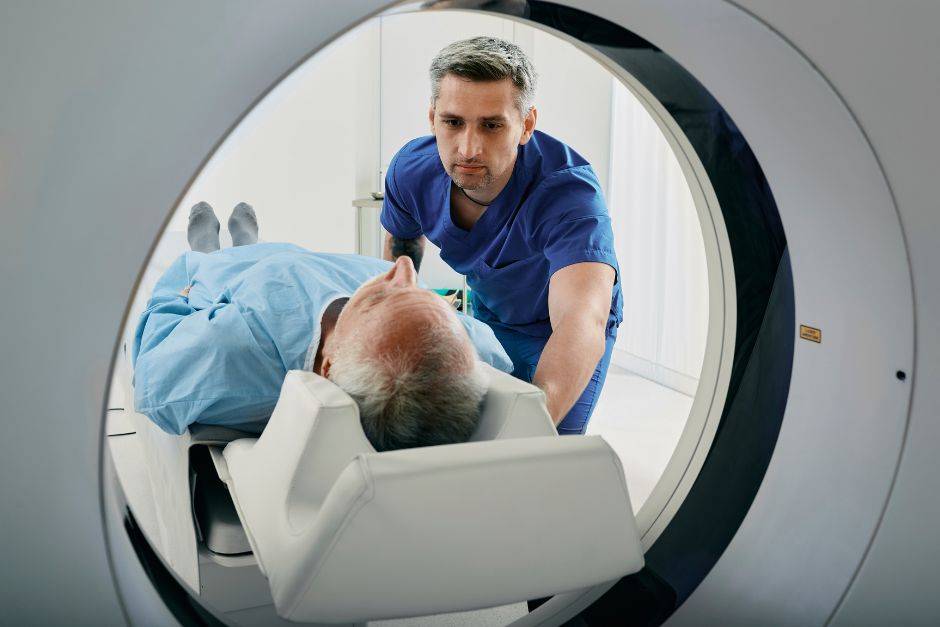The article highlights the aspects related to various hazards associated with the use of medical devices magnetic resonance environment.

Table of content
The Food and Drug Administration (FDA or the Agency), the US regulating authority in the sphere of healthcare products, has published a guidance document dedicated to testing and labeling medical devices for safety in the magnetic resonance (MR) environment.
The document provides an overview of the applicable regulatory requirements, as well as additional clarifications and recommendations to be taken into consideration by medical device manufacturers and other parties involved in order to ensure compliance thereto.
At the same time, provisions of the guidance are non-binding in their legal nature, nor are they intended to introduce new rules or impose new obligations.
Moreover, the authority explicitly states that an alternative approach could be applied, provided such an approach is in line with the existing legal framework and has been agreed with the authority in advance.
The document describes, inter alia, the approach to be applied when addressing various hazards associated with the use of medical devices in the MR environment, such as heating, vibration, or extrinsic electrical potential.
As it was mentioned before, MR systems have become vitally important for medical diagnostics.
However, the interaction between these systems and various medical devices presents potential hazards, primarily due to the heating effects induced by the system’s radiofrequency (RF) and time-varying gradient fields.
Heating
First of all, the authority pays attention to the risks associated with heating.
This heating can appear either within the tissue contacting a medical device or within the medical device itself.
Given the potential risks, any medical device that might enter the MR system should address this hazard.
As further explained by the authority, RF-induced tissue heating depends on numerous variables.
These include the characteristics of the MR system’s transmit RF coil (its geometry, tuning, and source location, to name a few), the frequency, and the RF transmit mode, such as Circularly Polarized (CP) or Multichannel-2 (MC-2).
Patient-specific factors like anatomy, tissue properties, and their position relative to the RF coil should also be taken into consideration.
For those with implanted or patient-contacting medical devices, the device’s characteristics, including its geometry, size, materials, and its position within the RF field will become especially important.
A comprehensive RF safety evaluation is required for medical devices intended for use in the MR environment.
This evaluation should cover all the aforementioned variables to ensure that the worst-case heating scenario, which is clinically relevant, is thoroughly assessed.
The authority acknowledges the variables that exist, so a risk-based assessment might sometimes be more feasible and reasonable than a worst-case approach.
For the purpose of the above risk-based approach, the following classification should be utilized:
- Fully implanted passive Medical Devices: These include stents, clips, screws, heart valves, and more.
- Active Implantable Medical Devices (AIMDs): Examples are neurostimulators, pacemakers, and cochlear implants.
- Partially Implanted Medical Devices: MR-guided ablation catheters and orthopedic external fixators fall under this category.
- Externally Connected Medical Devices: These comprise EEG electrodes, ECG electrodes, and pulse oximeters, among others.
For the first category, the fully implanted passive devices, the ASTM F2182 standard offers a method to measure RF-induced heating.
The FDA has also provided guidance, particularly for multi-configuration passive medical devices, to aid in determining the worst-case configurations.

Gradient Field Concerns
As explained by the Authority, exposure to time-varying magnetic fields (often referred to as gradient pulses) can lead to eddy currents on the conductive surfaces of implants and in the internal components of AIMDs.
ISO/TS 10974 lays down test methods for AIMDs, but passive devices, due to their typical small planar surface area, are often considered low-risk.
However, exceptions like large cranial plates do exist, which may require adapted testing methods.
Vibrations Induced by Gradient Fields
According to the guidance, another point of concern is the vibration caused by the MR system’s pulsed gradient magnetic fields.
These induced forces can cause metallic medical devices to vibrate, potentially leading to malfunction or even tissue damage.
The ISO/TS 10974 standard provides a test method for AIMDs in this context as well.
Unintended Stimulation & Malfunctions
One of the more serious potential hazards described in the guidance is the unintended physiological stimulation, which might occur due to electric potentials induced by the time-varying gradient magnetic fields in the leads of an AIMD.
Similarly, in the MR environment, RF waveforms can be converted into voltages that might stimulate tissues unintentionally.
Active medical devices, when exposed to the MR environment, are also at risk of malfunctioning, either temporarily during the MR procedure or permanently thereafter.
ISO/TS 10974 offers a comprehensive set of test methods to assess potential malfunctions induced by various MR fields, ensuring the safety and proper performance of the device in question.
Conclusion
In summary, the authority explains that the magnetic resonance environment represents a complex landscape from the medical device safety perspective.
Comprehensive testing, as per such standards as ISO/TS 10974 and ASTM F2182, is vitally important for the purpose of ensuring the safety and functionality of medical devices within the MR environment.
How Can RegDesk Help?
RegDesk is a holistic Regulatory Information Management System that provides medical device and pharma companies with regulatory intelligence for over 120 markets worldwide. It can help you prepare and publish global applications, manage standards, run change assessments, and obtain real-time alerts on regulatory changes through a centralized platform. Our clients also have access to our network of over 4000 compliance experts worldwide to obtain verification on critical questions. Global expansion has never been this simple.

